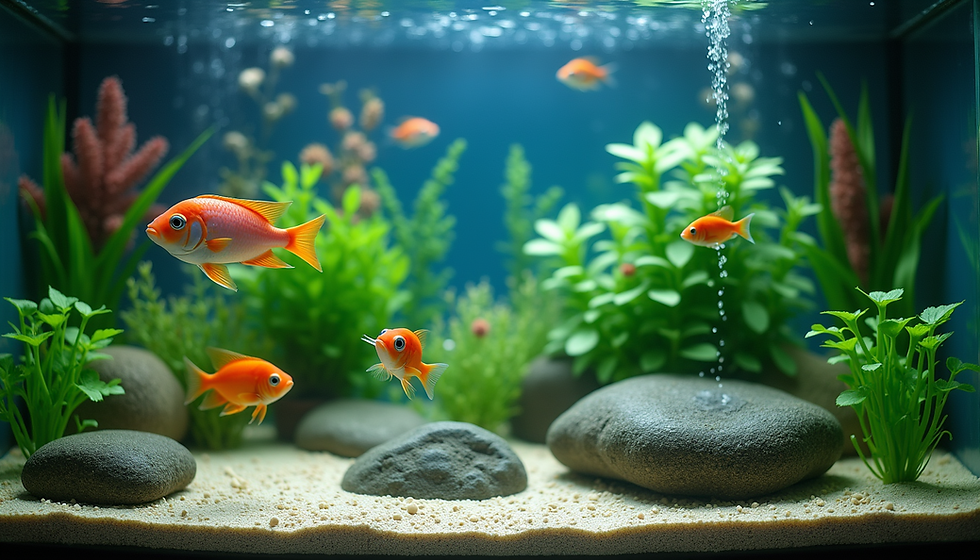Choosing The Right Aquarium Tank Size
- Blessings Aquarium

- Jan 18, 2024
- 2 min read
When it comes to setting up a home aquarium, one of the most critical decisions you'll make is choosing the right tank size. This choice is not just about aesthetics; it significantly impacts the health and well-being of your aquatic pets, as well as the maintenance effort required. In this guide, we'll explore key factors to consider when selecting the ideal aquarium size for your home.
Understanding Your Space and Fish Needs
Firstly, assess the space available in your home. A larger tank might be appealing, but it requires adequate space for setup and easy access for maintenance. Conversely, smaller tanks can fit in tight spaces but limit the number and type of fish you can keep.
Consider the type of fish you wish to keep. Different species have varying space requirements. Research your preferred species' needs, considering their adult size and activity level. Remember, more space usually means happier and healthier fish.
The Benefits of Larger Tanks
Larger tanks, generally above 50 gallons, are often recommended for beginners. Why? They provide a more stable environment. Water parameters like temperature and pH remain more consistent in larger volumes, reducing the risk of rapid fluctuations that can stress or harm your fish. Additionally, larger tanks offer more scope for creating diverse and engaging environments for your fish.
Maintenance and Budget Considerations
Maintenance is a crucial aspect often overlooked by new aquarium enthusiasts. Larger tanks require more substrate, decor, and, importantly, more time for cleaning. However, they often require less frequent maintenance than smaller tanks. Balance your available time for upkeep with your desire for a certain tank size.
Budget plays a role too. Larger tanks are more expensive initially and cost more to maintain. They need larger filters, heaters, and more lighting, not to mention the increased water treatment costs. Ensure that your tank choice aligns with your long-term budget.
Starting Small: Pros and Cons
For those limited by space or budget, smaller tanks can be a great option. They are less expensive and can be a good way to learn basic fishkeeping skills. However, they require more frequent water changes and monitoring to maintain water quality. Small tanks are less forgiving to mistakes or fluctuations in water parameters, so they demand more vigilance.
Conclusion
Choosing the right aquarium size is a balance of space, budget, fish species, and maintenance considerations. Larger tanks offer stability and flexibility but come with higher costs and maintenance needs. Smaller tanks are budget-friendly and space-saving but require diligent care. Assess your situation, research your preferred fish species, and make an informed decision to ensure a thriving aquatic environment in your home.
For more details visit our YouTube channel : Blessings Aquarium





Comments